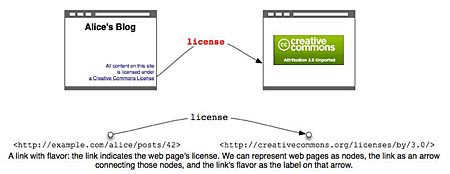There are so many causes clamoring for money and help. Ten or twenty pleas for money can drift by like a river of tweets, and then you suddenly decide to donate. Have you ever thought about why? What turns the donate switch for you? More . . .
There are so many causes clamoring for money and help. Ten or twenty pleas for money can drift by like a river of tweets, and then you suddenly decide to donate. Have you ever thought about why? What turns the donate switch for you?
The March 2009 Alertbox article from Jakob Nielsen is a report teaser titled Donation Usability: Increasing Online Giving to Non-Profits and Charities. You can get a few key points from the article, but you have to pay $98 for the full report.
Jakob Nielsen is a usability guru who publishes at useit.com and is well known for pointing out usability problems on the Web. His findings in the study about non-profits and charities that are seeking donation is summarized,
User research finds significant deficiencies in non-profit organizations’ website content, which often fails to provide the info people need to make donation decisions.
“Fails to provide the info people need to make donation decisions.” What does that mean? The article gives a few key points. First,
Non-profits would collect much more from their websites if only they’d clearly state what they are about and how they use donations.
Nielsen’s study looked at 23 non-profit websites and judged them on two tasks:
– Choosing a recipient: Participants used two non-profit sites within a given category and decided which of the organizations — which had roughly similar missions — was most deserving of a donation.
– Making a donation: Using their own credit cards, participants made an online donation to the chosen charity. We reimbursed users for this expense after the study.
He gathered up a range of test participants, all of whom had donated online before. What he found when he studied the participants’ behavior was that an organization’s mission, goals, objectives, and work was by far the most important consideration in terms of the decision to donate. People want to contribute to causes that share their values and ideals. If those goals and objectives are not clearly spelled out immediately, the donation probably won’t be made.
Social Design Notes, commented on this finding:
In my consulting work, I’ve long argued that posting a budget breakdown is an easy way to increase transparency and fundraising. (Especially since most groups already create this for their annual report.) Where possible, pegging fundraising to specific tasks and outcomes also helps.
Nielsen found other factors he said reduce donations:
The donation-killers:
– 47% were usability problems relating to page and site design, including unintuitive information architecture, cluttered pages, and confusing workflow.
– Amazingly, on 17% of the sites, users couldn’t find where to make a donation. You’d imagine that donation-dependent sites would at least get that one design element right, but banner-blindness or over-formatting caused people to overlook some donation buttons.
– 53% were content issues related to writing for the Web, including unclear or missing information and confusing terms.
At Wild Apricot, in Better Non-Profit Websites to Increase Online Donations: Usability Report, talked about the need for clear content.
In 2008, non-profits and charities collected about 10% of their donations online, according to a survey by Target Analytics, but usability expert Jakob Nielsen says the amount of money collected online could be much higher — with improved website design and content that answers the donors’ real questions.
Another key point in Nielsen’s findings is that a website (a well-designed website, that is) is good for getting impulse donations, but for long-term donor relationships, email newsletters work more effective. Follow up and keep following up.
The study also found that international non-profits with local websites could substantially improve their overall Web presence by creating a unified look-and-feel for local sites. The international site and the local site need to obviously and clearly integrate as a seamless whole.
At the elearningpost, a similar study was described. The findings are discussed in Donation Usability: Increasing Online Giving to Non-Profits and Charities
We found similar themes when we did the redesign for the National University of Singapore Giving website. We found that there was a need to inform donors on why their gifts were needed and how they will be used (the LEARN section). Also we found that there was a need to pay-back in kind by honouring donors (the HONOUR section). It goes without saying the the DONATE section had to be without flaws. So glad to know that the findings are similar across continents.
At Social Citizens Kristin Ivie summed up a number of Facts, Figures and Fodder: Online Giving studies including the Nielsen study. Another study she mentions emphasizes the importance of
aggressively working to involve people in their 20s and 30s and how to best get them onboard. Even if young donors don’t have deep pockets, they can be valuable parts of the cause in the longterm.
The lessons to be learned from the free Nielsen article by those working in the non-profit sector seems to be threefold:
1. Make your cause and goal clear and obvious
2. Make donating simple and easy
3. Maintain contact by e-mail after the original donation is made. And, of course, the email newsletters must make your cause and goal clear and make donating easy and well as keeping readers informed about progress and successes.
Cross posted at BlogHer.


